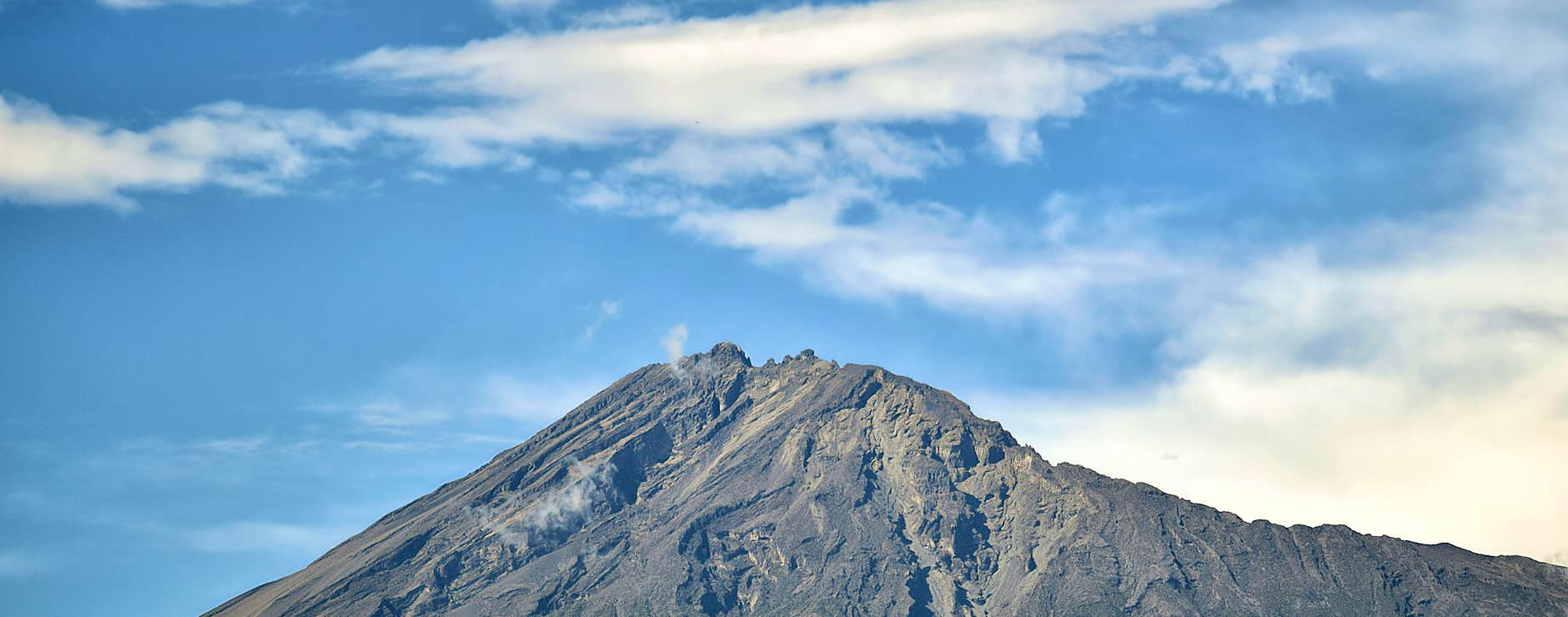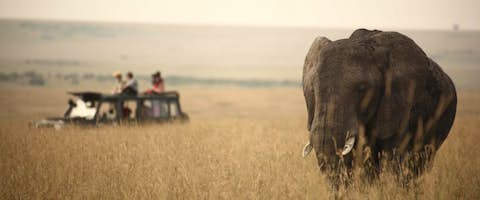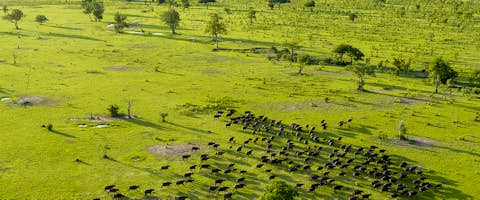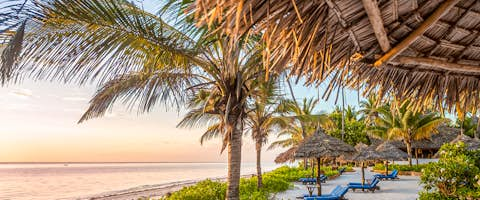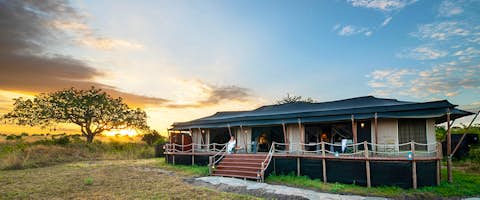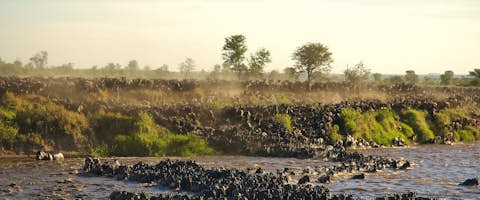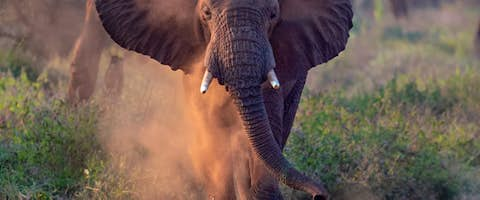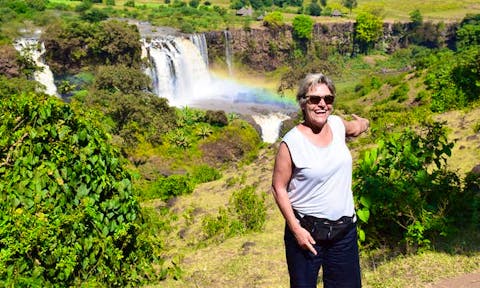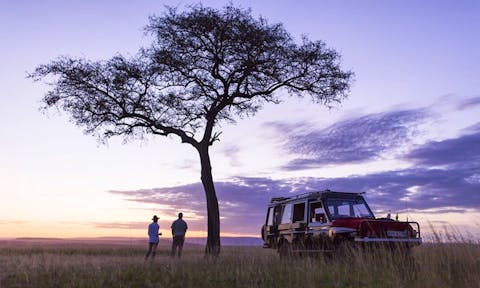Mount Meru, at a glance
Where is Mount Meru located?
Mount Meru is located in north eastern Tanzania. Mount Meru is one of Africa’s best trekking routes due to the incredible views from its crater.
Like Kilimanjaro, Meru is an active volcano, but its last minor eruption was over a century ago in 1910. Millions of years ago a major eruption blew off the top of the volcano, giving it a horseshoe shape. Its summit collapsed around 7,800 years ago and much of the volcano’s bulk was lost.
It was first summited in the early 20th century by German explorers during their colonisation of East Africa, although it is disputed whether the first successful expedition was led by Carl Uhlig in 1901 or Fritz Jaeger in 1904.
The mountain is sometimes confused with Meru Peak, a mountain in the Himalayas. However, Mount Meru in Tanzania is a safer climb, and it offers an attainable challenge for trekking enthusiasts.
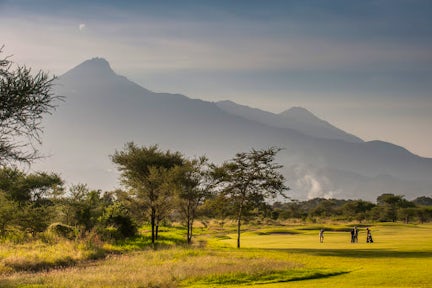
Kilimanjaro vs Meru - which one should I climb?
Meru is often dismissed in favour of its bigger and more renowned neighbour, Kilimanjaro. However, Meru is the 5th tallest mountain in Africa, and Meru treks are an attraction in their own right.
Meru is far less crowded than Kilimanjaro. On Kili treks, you can sometimes feel as though you are following a conveyor belt of trekkers. This rarely happens on Meru treks.
Meru’s huts can fill up in the high season, but this is due to a lack of accommodation rather than the number of trekkers.
Mount Meru towers over Arusha National Park, and you will see an array of wildlife on your trek. On the lower slopes, you will encounter antelopes, buffalos, and other majestic animals. Your (compulsory) guide is armed to protect you from predators.
Meru treks are also much cheaper than Kili treks (around £1,000 cheaper). Meru treks are shorter than Kili treks, so the park and conservation fees don’t rack up as much.
Finally, although Meru is smaller than Kilimanjaro, it is widely considered to be a more demanding trek, so you will still have bragging rights upon your return.
Many experienced climbers decide to climb Mount Meru in preparation for a Kili trek. You may choose to acclimatise on a Meru trek before you tackle Kilimanjaro.
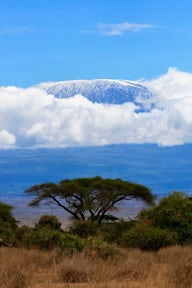
Flora and Fauna on Mount Meru
Mount Meru’s slopes are home to an impressive range of wildlife.
You will pass through several climate zones during your ascent, including grasslands, tropical rainforest, moorlands, desert, and ice and snow at the top.
400 species of bird, buffalos, antelopes, white colobus monkeys, and leopards could all cross your path on your trek.
Mount Meru treks combine a conventional trek with a walking safari through a diverse variety of ecosystems.
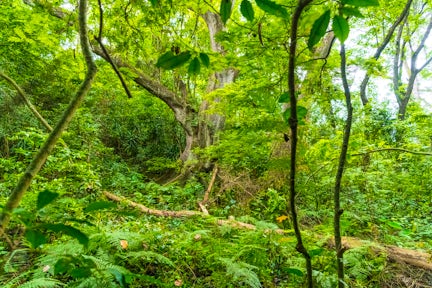
Mount Meru FAQs
-
How to get to Mount Meru?
Mount Meru towers above Arusha, the safari capital of Tanzania. International travellers can get to Arusha by flying to Kilimanjaro International Airport (JRO), which is around 45 minutes away from city.
Arusha has a small airport, but this is only used by domestic planes, especially those linking to safari or beach destinations. Some travellers choose to stay in Moshi, a town on the border with Kenya.
Moshi is a 45-minute drive from Kilimanjaro International Airport, and it is quieter and easier to navigate than Arusha. Most trekkers decide to stay for a night either side of their trek.
On the day of the trek, we will arrange transport to Momella Gate, where you will commence your adventure.
-
When to climb Mount Meru?
The best climbing conditions are present during the dry seasons: June to October and December to February.
June to October will be slightly colder, as January and February are the hottest months of the year.
It will still be very cold at the summit (below 0°C), but we can advise you on what equipment to bring to face any temperature changes.
-
How long does it take to climb Mount Meru?
Mount Meru takes 3-4 days to summit. We recommend the longer version since it allows you to acclimatize better and enjoy the scenic views at a more leisurely pace.
The 3-day trek is also very hard on your knees as you descend within a single day.
Unlike Kilimanjaro treks, Meru treks follow a single trail called Momella Route. There used to be two other paths, but these are now illegal to use.
You will stay in two huts, Saddle Hut and Miriakamba Hut, which offer basic but clean accommodation. These can fill up very quickly in the high season, so we will ensure that we provide you with tents.
A guide is obligatory for all trips and porters are recommended but not compulsory. Booking a porter will ensure that your trek is more enjoyable.
During your trek you will reach two summits, Little Meru, and Socialist Peak. The final ascent will be done in the early hours so that you can watch the sunrise at Socialist Peak.
The walk along the crater and the view from the summit is unforgettable, and you can see Kilimanjaro in the distance on a clear day.
If you want to experience smaller, less time-intensive treks, we also organise several beautiful hikes along the slopes of Meru.
-
How hard is it to climb Mount Meru?
Meru treks are considered to be slightly more difficult than Kilimanjaro treks. However, Meru is not as tall as Kilimanjaro, so altitude sickness will be less of an issue.
Mount Meru is not a technical climb, so you will not need any previous mountaineering experience, but it is a steep climb, so you must have a good level of fitness. You will not need oxygen, although your guides will carry some for medical emergencies.
The secret to climbing to Mount Meru is pacing yourself to adapt to the altitude.
You can prepare for your trek by doing smaller walks with some luggage, or you can even go camping on the slopes to get used to the conditions.
-
Cost of climbing Mount Meru
Climbing Mount Meru is a lot cheaper than climbing Kilimanjaro, but there are several park fees to consider when booking a trip.
Tours cost around US$400-800, but we would generally advise to book upwards of US$650 to guarantee a safe ascent and the ethical payment of your guides. Your guides will protect you from wild animals on this trek and you might be faced with altitude sickness and other issues, so a well-paid, well-trained guide is integral to your comfort and safety.
Tour guiding and trekking is a crucial part of the livelihood of people who live in northern Tanzania. You can trek without a tour company, but you will still need to hire a guide at the gate.
Places to stay in Arusha
In the town
During
the trek itself, you will be sleeping in huts. We recommend staying in
Arusha or Moshi for at least one night before and after your trip,
although both towns have lots to offer for many days more.
There are several budget options in Arusha, including The African Tulip and the Impala Hotel. The Impala Hotel is a large hotel with a pool and restaurant, and it is a great option if you are looking for a place to stay after an international flight or the night before a safari.
The African Tulip is a quaint boutique hotel which offers an airport shuttle.
Most of the upmarket hotels can be found in the eastern area of Arusha. The Gran Melia Arusha offers fantastic views of Mt Meru, a well-stocked bar, a spa, and a pool.
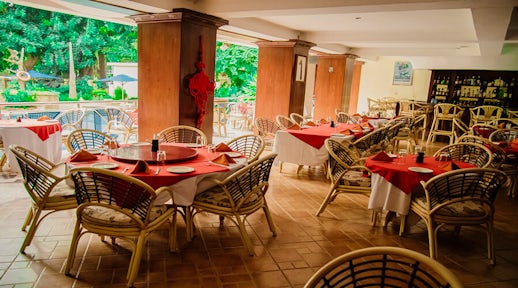
Outside the town
Some of the best accommodation options in Arusha lie outside of the city. The less expensive options include Onsea House, Rivertrees, and Arumeru River Lodge.
Onsea House is a charming boutique guesthouse that was originally a farmhouse. It has two swimming pools, a sauna, a steam room, and a jacuzzi, and its gardens are tranquil. The guesthouse also has a restaurant which serves delicious food. The guesthouse is only an hour away from the airport, making it an excellent place to relax before or after a safari. Onsea House offers 2 double suites and a family suite that overlooks the Meru Valley. The adjacent self-contained cottage is perfect for families.
Arumeru River Lodge is a peaceful lodge which offers great access to Kilimanjaro International Airport. It has vast gardens which are home to dik-diks, monkeys and countless bird species. On a clear day, the lodge has exceptional views of Mt Meru and Mt Kilimanjaro. The lodge organises horseback safaris and it is tastefully furnished with traditional dhow furniture.

Rivertrees Lodge is located on an old coffee farm and with views of Mt Meru and Mt Kilimanjaro, the lodge is an excellent base for trekking. The delicious food matches the high quality of the coffee, and its oven-fired pizza pit is popular with its guests.
Arusha Coffee Lodge is just a 25-minute drive from Arusha, and this old plantation brims with luxury. The exquisitely decorated rooms are spread across the grounds and each room has its own indoor fireplace. Given that the lodge is a former coffee plantation, it offers tours of the old plantation house and coffee-making process. The theme of coffee runs throughout the hotel – in the bar, restaurant, gardens, and even the spa.
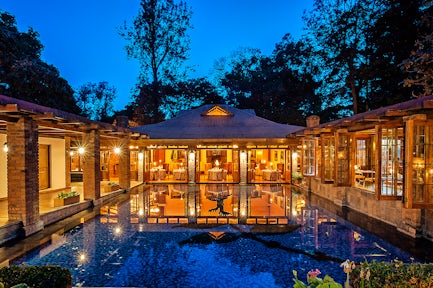
Places to stay in Moshi
Located 30 minutes from Kilimanjaro International Airport, the Pink Flamingo Hotel is a family-run boutique hotel which is just 5 minutes from Moshi Town.
The hotel has its own taxi drivers who will take you to the town for around US$5.
The hotel offers 3 individual properties, 2 of which have private swimming pools, and a main hotel building.
The lodge’s beautiful grounds are a great place to recover after a Mount Meru trek.
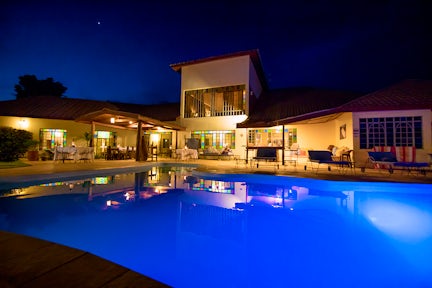
Popular Trips to Tanzania
Ready to plan your African adventure?
Listen
We'll spend some time listening to your aspirations, then discuss the kind of experience that might suit you.
Match
Next we'll discuss the options, shortlist the best trips for you and present you our impartial recommendations.
Reserve
We'll place a 24 hour hold on your preferred option - without obligation - whilst we talk through the details.
Whatever your budget, group size, length of stay, preferred activity or appetite for adventure, we can help.

